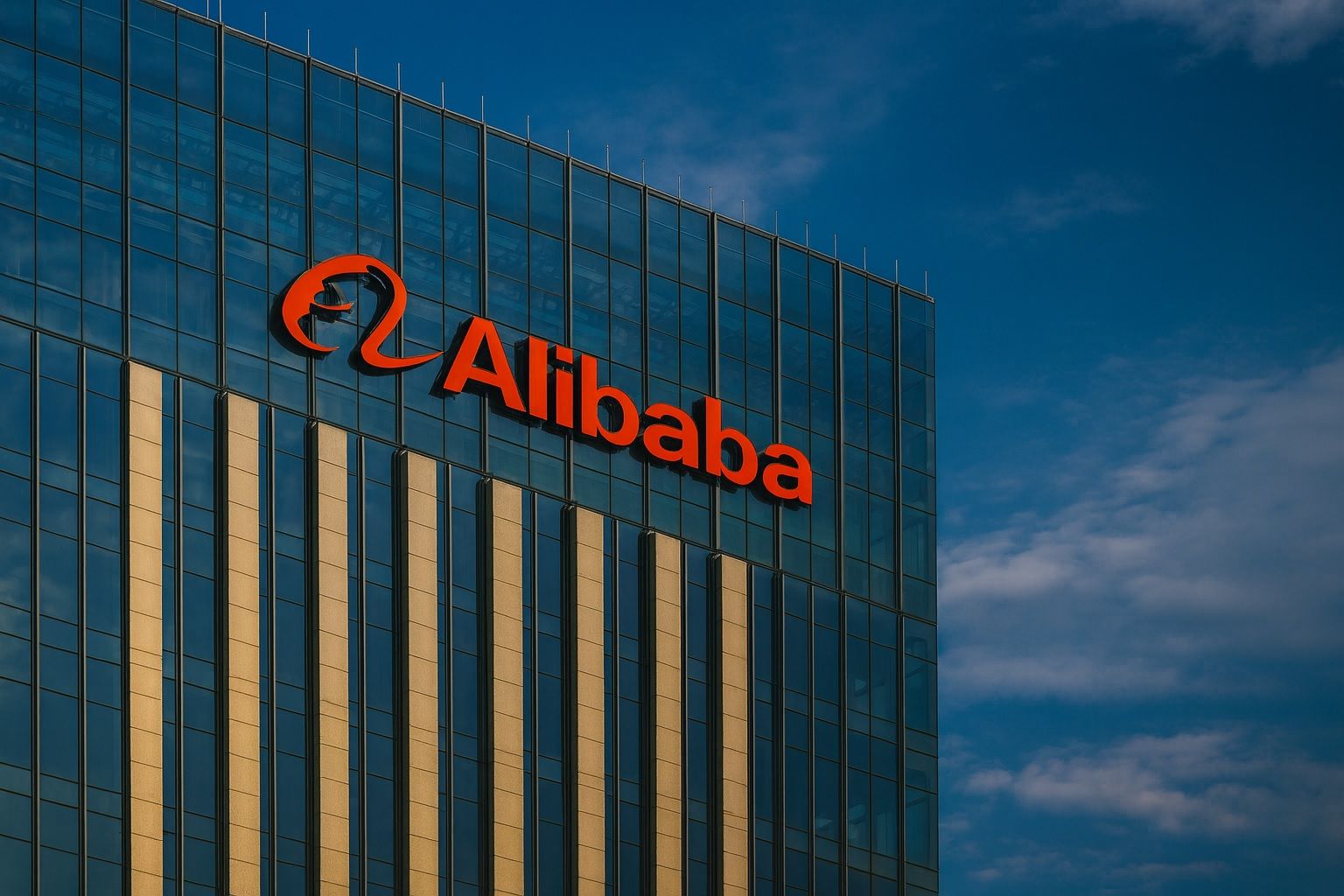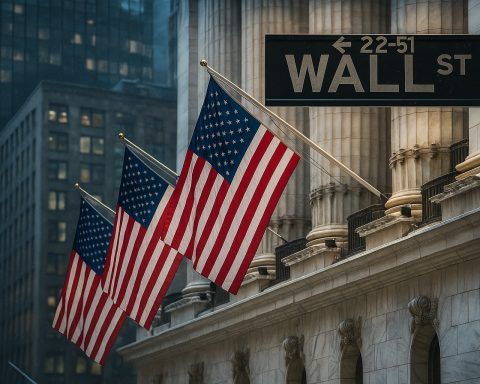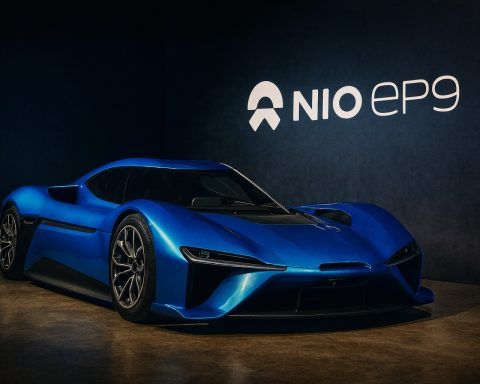Alibaba Group Holding (NYSE: BABA) is having a volatile session on Friday, November 14, 2025, as the stock digests a heavy mix of bullish AI and fintech announcements, a new US national‑security headline, and earnings and Singles’ Day uncertainty.
Alibaba (BABA) stock price today
As of the latest trade at 18:24:06 UTC on November 14, 2025, Alibaba’s US‑listed ADRs were:
- Price:$154.97
- Day move: down $4.87 (about ‑3.0%)
- Intraday range:$154.08 – $162.61
- Volume: ~16 million shares, indicating active trading.
Even after today’s pullback, BABA remains one of 2025’s standout China tech names: different data providers put its year‑to‑date gain at roughly 88–96%, reflecting a near‑doubling of the share price this year. [1]
On valuation, recent snapshots from MarketBeat and GuruFocus show:
- Market cap: around $380–390 billion
- P/E ratio: ~18–19x
- 12‑month range: roughly $80 – $192 per ADR. [2]
So the big question for investors today is why BABA is dropping despite a stream of seemingly positive product news.
1. New AI subscription service and JPMorgan tokenization partnership
One of the most concrete bullish catalysts today comes from Alibaba’s global B2B arm, Alibaba.com.
AI Mode subscription for B2B buyers
Crypto/fintech outlet CoinCentral reports that Alibaba is launching a paid AI subscription service for business buyers: [3]
- Price:$20 per month or $99 per year
- Product is effectively an “AI Mode” for Alibaba.com, powered by the in‑house Accio engine.
- It aims to automate supplier discovery, price comparison, logistics and compliance checks for global buyers on the platform.
Benzinga adds that this new AI layer builds on broader tools Alibaba is rolling out across its marketplaces and mobile apps to speed up cross‑border sourcing and deliver more intuitive shopping experiences for over 200,000 merchants already using its wholesale platform. [4]
Taken together, these moves show Alibaba trying to monetise AI directly instead of treating it as a purely defensive feature. A recurring B2B subscription model could also smooth revenue compared with one‑off transaction fees.
Blockchain and JPMorgan partnership for cross‑border payments
CoinCentral also highlights that Alibaba is partnering with JPMorgan to use tokenization and blockchain technology for cross‑border B2B payments, with the blockchain‑enabled features expected to go live from December 2025. [5]
In parallel, Cointelegraph (via TradingView) reports that the cross‑border arm of Alibaba is working on a “deposit token” structure — a regulated, blockchain‑based claim on commercial bank deposits — as China tightens oversight of traditional stablecoins. [6]
If these initiatives gain traction, they could:
- Reduce FX and settlement friction for Alibaba’s B2B merchants.
- Deepen ties with global banks like JPMorgan.
- Strengthen Alibaba’s narrative as a core infrastructure player in AI + fintech rather than just an e‑commerce front‑end.
So why is the stock down? Because the bullish product story is running straight into macro, political and valuation headwinds.
2. White House memo headline revives geopolitical risk
One of the most eye‑catching headlines on Friday is a Reuters report via MarketScreener, summarising a Financial Times story that a White House memo claims Alibaba is helping the Chinese military target the United States. [7]
Details of the memo and Alibaba’s response are not publicly clear from the available summary, and these remain allegations in a reported document, not established facts. But for investors, the impact doesn’t depend on every detail being known:
- It revives fears about US–China tech decoupling and sanctions risk.
- It could eventually influence US procurement, cloud and data‑related restrictions involving Alibaba.
- It reminds markets that, despite the rally, BABA carries persistent geopolitical overhang similar to other Chinese large caps with sensitive data or AI capabilities.
When a stock has nearly doubled year‑to‑date, even a headline hinting at national‑security scrutiny can trigger profit‑taking.
3. Singles’ Day ends with “muted” sentiment and no detailed Alibaba sales yet
Fundamentally, e‑commerce investors are still trying to work out how strong Alibaba’s core end‑market is.
According to Reuters, China’s Singles’ Day shopping festival – which now runs for more than a month – wrapped up with what observers described as “muted” sentiment despite total sales across platforms rising to about 1.7 trillion yuan versus 1.44 trillion yuan last year. [8]
Key points:
- Alibaba’s Tmall and Taobao extended Double 11 deals through November 14, but have not yet released detailed sales data for the event. [9]
- Alibaba targeted its highest‑value 88VIP members with 50 billion yuan in subsidies and saw a 39% increase in daily active buyers among these big spenders during the festival. [10]
- Consumer sentiment in China remains cautious due to the property slump and income insecurity, forcing platforms to rely more on deep discounts to generate volume. [11]
For BABA shareholders, the absence of detailed GMV or revenue disclosure from Singles’ Day — now a multiyear pattern — means investors must infer performance from third‑party data and commentary, adding uncertainty right before earnings.
4. Strategic AI investment in Dexmal: doubling down on embodied intelligence
Beyond near‑term promotions, Alibaba is also moving further into robotics and embodied AI.
Chinese tech outlet 36Kr reports that Alibaba has become the sole investor in a Series A+ round worth “hundreds of millions of yuan” for Dexmal, an embodied‑intelligence startup founded in March 2025. Total funding across three rounds is now close to 1.2 billion yuan. [12]
Highlights from the report:
- Dexmal focuses on end‑to‑end embodied intelligence, building large models, control systems, robot hardware and cloud collaboration platforms. [13]
- The founding team comes from Megvii Technology, one of China’s original “Four AI Dragons,” with deep experience in computer vision and large‑model deployment. [14]
- The article frames Alibaba’s participation as “investing in people and context” — a way to lock in top AI talent and position itself at the frontier of robotics and general AI in the physical world. [15]
For investors, this reinforces a theme also emphasised by hedge fund Antipodes in its latest investor letter: Alibaba is increasingly seen as a key AI beneficiary in China, with its own silicon, large‑language models and a cloud platform that can monetise those capabilities through advertising, search and enterprise workloads. [16]
5. Analysts and AI models: bullish humans, cautious algorithms
UBS “Future Leaders” list and institutional buying
A GuruFocus note today highlights that UBS has placed Alibaba third on its list of 30 “Future Leaders” expected to outperform through 2030. BABA’s year‑to‑date performance is put at about +87.8%, and UBS groups it among technology‑driven names in greentech, fintech and healthtech. [17]
Key stats from that piece:
- Revenue around $139 billion, with gross margin about 41% and net margin around 15%.
- Strong balance sheet indicators, including a current ratio of ~1.45 and debt‑to‑equity ~0.23. [18]
On the flows side, MarketBeat reports that Good Life Advisors LLC increased its BABA position by 35.7% in Q2, to 13,555 shares worth roughly $1.54 million, while several other small and mid‑sized firms have initiated or boosted stakes. Overall, about 13.47% of the stock is held by institutions and hedge funds, according to that article. [19]
AI analyst downgrade vs human “Buy” consensus
Interestingly, TipRanks’ AI‑powered analyst downgraded Alibaba today from Buy to Neutral, trimming its price target from $205 to $176 — only around 8% upside from recent levels. It cited “bearish technical indicators” and valuation concerns, even as it acknowledged the stock has climbed more than 91% YTD thanks to cloud‑AI and fast‑delivery growth. [20]
By contrast:
- TipRanks notes that the average Wall Street target still implies nearly 24% upside. [21]
- MarketBeat’s coverage shows one Strong Buy, seventeen Buys and one Sell, with an average target price around $190 per share. [22]
In short, algorithms are turning cautious just as human analysts remain broadly bullish, and that tension is showing up in today’s price action.
6. AI and tech sentiment wobble after Baidu’s stumble
Alibaba’s moves are happening against a noisy backdrop for Chinese AI plays.
A TradingView/GuruFocus piece notes that Baidu’s stock plunged nearly 10% in Hong Kong after its Ernie 5.0 AI model reveal underwhelmed investors, who had hoped for a more transformative update. [23]
The same article mentions that:
- Baidu is still up more than 40% this year, but the AI trade is showing valuation jitters.
- Alibaba is preparing a redesign of its main AI‑powered mobile app to more closely resemble ChatGPT, yet its own shares slipped as much as 3.5% in Friday trading, giving back part of Thursday’s rally. [24]
This context matters: investors are starting to differentiate real earnings power from AI hype, and any perceived mis‑step or political headline can trigger sharp moves in the whole China tech complex — including BABA.
7. Technical picture: support under pressure but long‑term signals still positive
Quant shop Stock Traders Daily published an AI‑driven note today describing BABA’s setup as a classic tug‑of‑war between weak short‑term sentiment and a constructive long‑term trend. [25]
Their key observations:
- Near‑term (1–5 days) and mid‑term (5–20 days) signals are weak, with support zones around $154–156 and resistance near $160–161.
- Long‑term signals remain strong, with a key resistance/target around $183, implying double‑digit upside if the current support holds. [26]
Given today’s intraday low just above $154, that support band is being tested in real time. If it breaks decisively, technicians may look toward lower levels identified in their models; if it holds, a bounce toward the high‑$160s or low‑$170s is plausible in the coming weeks.
8. Buybacks and earnings: the next big catalysts
Aggressive share repurchases
Alibaba has been quietly leaning on its balance sheet to support the stock:
- In the quarter ended September 30, 2025, the company repurchased 17 million ordinary shares (about 2 million ADSs) for US$241 million in the US market.
- As of that date, it still had US$19.1 billion left under its board‑authorised share repurchase program, effective through March 2027. [27]
Robust buybacks can cushion downside on volatile days and boost per‑share earnings over time, especially if repurchases happen below intrinsic value.
Earnings date and what investors will focus on
According to Alibaba’s official investor‑relations site, the company will report unaudited results for the quarter ended September 30, 2025before the US market opens on Tuesday, November 25, 2025, followed by a conference call at 7:30 a.m. US Eastern Time (8:30 p.m. Hong Kong). [28]
Some third‑party calendars list Friday, November 21 as the earnings date, but the company’s own guidance points clearly to November 25, which is what most institutional investors will rely on. [29]
Key line‑items the market will scrutinise:
- China commerce: to gauge how Singles’ Day and the broader consumer slowdown are affecting GMV and take rate.
- Cloud & AI: growth rates, margins and customer wins as Alibaba competes domestically with Tencent, Baidu and up‑and‑coming AI specialists.
- International commerce & logistics (Cainiao): any sign that cross‑border initiatives, including AI Mode and tokenized payments, are accelerating growth.
- Margin and buyback commentary: given ongoing repurchases and past antitrust and regulatory costs. [30]
9. What today means for BABA investors
Putting all of this together, today’s move looks less like a collapse in the Alibaba story and more like a repricing of risk after a huge run‑up:
Bullish elements today
- Concrete AI monetisation efforts: subscription revenue, merchant productivity tools and AI‑driven sourcing on Alibaba.com. [31]
- Strategic bets on embodied intelligence (Dexmal) that deepen Alibaba’s AI talent and IP base. [32]
- Positive inclusion in UBS’s Future Leaders list, hedge‑fund letters calling it a key AI beneficiary, and ongoing buybacks. [33]
Bearish / cautionary elements
- The White House memo headline adds another layer of geopolitical and regulatory overhang. [34]
- Singles’ Day may have been decent in aggregate but looks less explosive than in past years, and Alibaba’s own disclosures are sparse so far. [35]
- AI‑driven models and some trading desks are flagging short‑term technical weakness and valuation stretch after a near‑100% YTD rally. [36]
For long‑term investors, the core thesis — that Alibaba is a cash‑generating e‑commerce and cloud platform increasingly wired into China’s AI build‑out — is unchanged by one volatile session. For traders, however, support around the mid‑$150s and the cluster of geopolitical and sentiment shocks today make BABA a high‑beta, event‑driven name into the November 25 earnings report.
Important note
This article is for informational purposes only and does not constitute financial advice, investment recommendation or an offer to buy or sell any securities. Always do your own research or consult a licensed financial adviser before making investment decisions.
References
1. finance.yahoo.com, 2. www.marketbeat.com, 3. coincentral.com, 4. www.benzinga.com, 5. coincentral.com, 6. www.tradingview.com, 7. www.marketscreener.com, 8. www.reuters.com, 9. www.reuters.com, 10. www.reuters.com, 11. www.reuters.com, 12. eu.36kr.com, 13. eu.36kr.com, 14. eu.36kr.com, 15. eu.36kr.com, 16. www.insidermonkey.com, 17. www.gurufocus.com, 18. www.gurufocus.com, 19. www.marketbeat.com, 20. www.tipranks.com, 21. www.tipranks.com, 22. www.marketbeat.com, 23. www.tradingview.com, 24. www.tradingview.com, 25. news.stocktradersdaily.com, 26. news.stocktradersdaily.com, 27. www.alibabagroup.com, 28. www.alibabagroup.com, 29. www.marketbeat.com, 30. blogs.law.ox.ac.uk, 31. www.benzinga.com, 32. eu.36kr.com, 33. www.gurufocus.com, 34. www.marketscreener.com, 35. www.reuters.com, 36. www.tipranks.com







